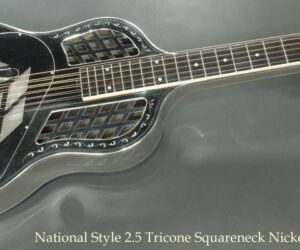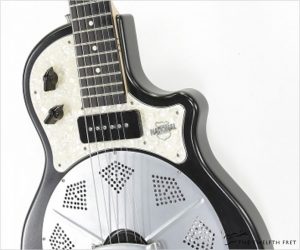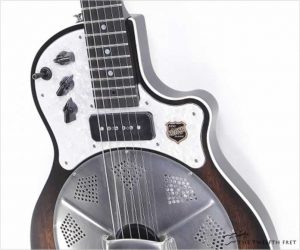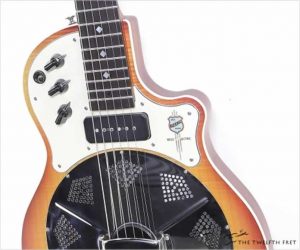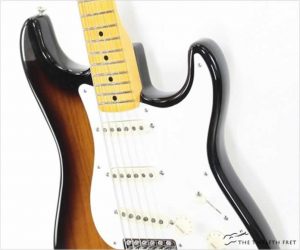The National Style 2.5 Tricone Squareneck, or ‘Style Two and a Half’ is very close to the Style 2, with just a rose engraving on coverplate’s hand rest making the difference. Introduced in 1927, the Style 2 was the top of the National line, with a brass body with nickel plating. The wooden components, such as the headstock, are Mahogany, except for the Ebony fingerboard. National Resophonic guitars were a radical, major innovation in musical instrument design.
Nickel Plate
The Gibson CS-336 P is a plain-top version of the CS-336, which replaced the ES-336 (introduced in 1996)in 2001. The name change also indicated construction changes. The back, sides and body supports of the CS-336 is carved from a Mahogany blank, and a carved Maple top is placed on top.
This instrument has sold
MORE →The National ResoLectric Jr. was produced for only a short time starting in 2001, and in two major versions.
This instrument has sold
MORE →Built in San Luis Obispo California, the National Resolectric Revolver blends the resophonic and solidbody electric guitar concepts, to great success. Very similar in design to the ResoLectric, the National Resolectric Revolver uses a solid Mahogany body that’s routed for the resonator and electric pickups, and a bolt-on Mahogany neck with Rosewood fingerboard. The headplate is a faux pearl covering.
Built in San Luis Obispo California, the National Resolectric solidbody guitar Sunburst blends the resophonic and solidbody electric guitar concepts, to great success. Very similar in design to the Resolectric Revolver, the National Resolectric uses the familiar pairing of a flame Maple top on a Mahogany body that’s routed for the resonator and electric pickups, and a bolt-on flame Maple neck with Rosewood fingerboard. The headplate is a faux pearl covering.
